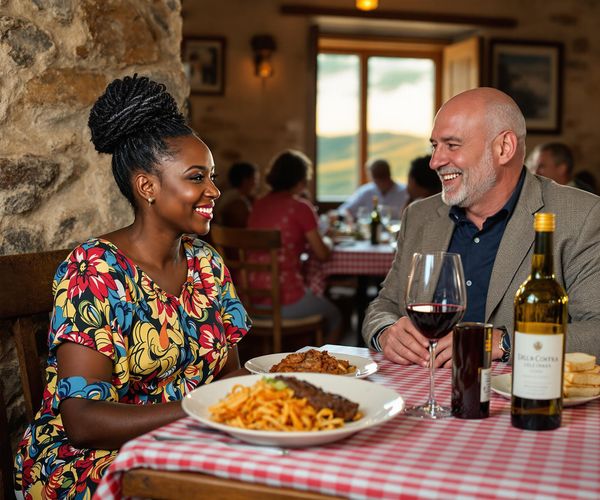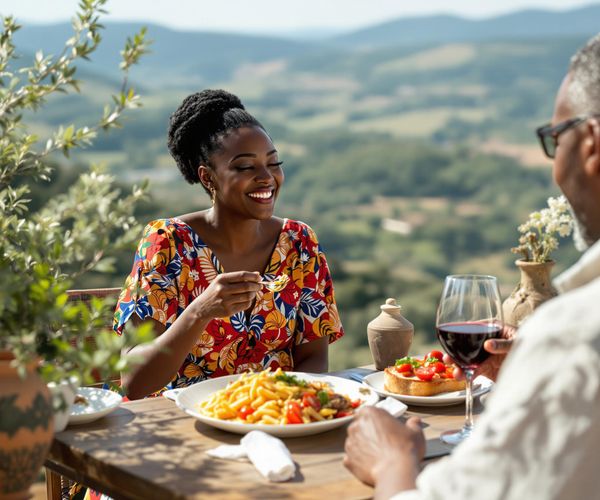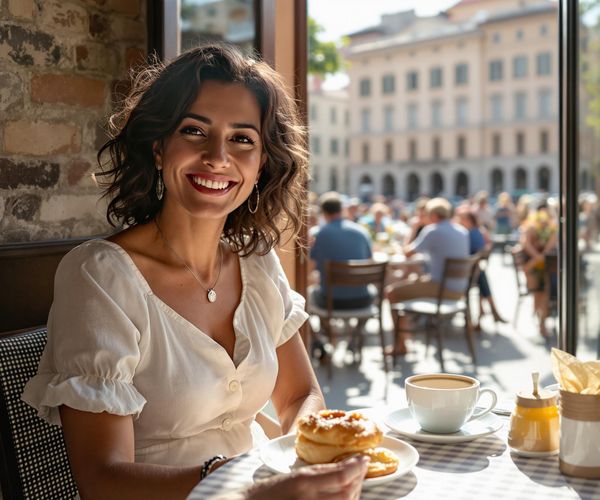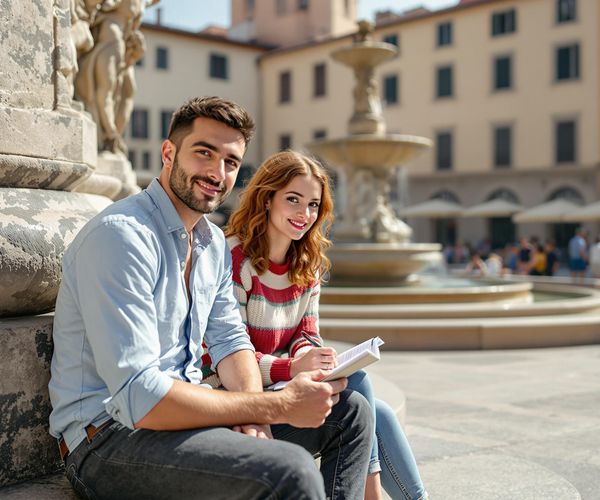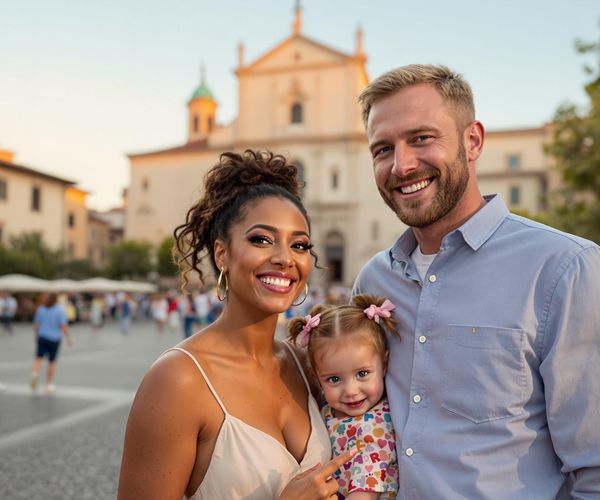
Perugia: The Heart of Umbria
Discover Perugia: A hilltop gem in Umbria brimming with history, culture, and culinary delights, from ancient Etruscan ruins to world-renowned jazz festivals and truffle cuisine.
Perugia, the capital of Italy's Umbria region, is a city rich in history, culture, and charm. Nestled on a hilltop, it offers breathtaking views of the surrounding countryside. As you wander through its narrow, winding streets, you'll find a mix of medieval, Etruscan, and Renaissance architecture, showcasing Perugia's long and storied past. The city's vibrant cultural scene is highlighted by its many festivals, the most famous being the Umbria Jazz Festival, which attracts music lovers from around the world. Art enthusiasts will enjoy the Galleria Nazionale dell'Umbria, which houses an impressive collection of Italian art from the Middle Ages to the 19th century. The city's well-preserved Etruscan walls and gates, such as the impressive Arco Etrusco, provide a glimpse into Perugia's ancient origins. Perugia is also known for its culinary delights. The region is famous for its truffles, and you'll find many restaurants serving dishes featuring this prized ingredient. Be sure to try the local chocolate, as the city is home to the famous Perugina chocolate factory. Outdoor enthusiasts will appreciate the nearby Lake Trasimeno and the rolling hills of the Umbrian countryside, perfect for hiking and exploring.
Local tips in Perugia
- Check the festival calendar. Plan your visit around the Umbria Jazz Festival or the Eurochocolate Festival for a unique experience.
- Wear comfortable shoes. Perugia's steep streets and cobblestone paths can be challenging to navigate.
- Visit the Rocca Paolina. This fortress offers a fascinating underground journey through Perugia's history.
- Take a day trip to Assisi. This nearby town, the birthplace of St. Francis, is only a short train ride away.
- Try the local specialties. Don't miss out on tasting truffle dishes and Perugina chocolates.
Perugia: The Heart of Umbria
Perugia, the capital of Italy's Umbria region, is a city rich in history, culture, and charm. Nestled on a hilltop, it offers breathtaking views of the surrounding countryside. As you wander through its narrow, winding streets, you'll find a mix of medieval, Etruscan, and Renaissance architecture, showcasing Perugia's long and storied past. The city's vibrant cultural scene is highlighted by its many festivals, the most famous being the Umbria Jazz Festival, which attracts music lovers from around the world. Art enthusiasts will enjoy the Galleria Nazionale dell'Umbria, which houses an impressive collection of Italian art from the Middle Ages to the 19th century. The city's well-preserved Etruscan walls and gates, such as the impressive Arco Etrusco, provide a glimpse into Perugia's ancient origins. Perugia is also known for its culinary delights. The region is famous for its truffles, and you'll find many restaurants serving dishes featuring this prized ingredient. Be sure to try the local chocolate, as the city is home to the famous Perugina chocolate factory. Outdoor enthusiasts will appreciate the nearby Lake Trasimeno and the rolling hills of the Umbrian countryside, perfect for hiking and exploring.
When is the best time to go to Perugia?
Iconic landmarks you can’t miss
Piazza IV Novembre
Explore the enchanting Piazza IV Novembre, a historical landmark in Perugia, offering stunning architecture, vibrant culture, and rich history.

Rocca Paolina
Discover Rocca Paolina, an iconic historical landmark in Perugia blending rich culture, stunning architecture, and breathtaking views of the Umbrian landscape.
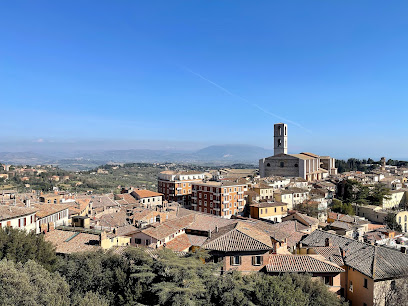
Città della Domenica
Experience the magic of Città della Domenica, a family amusement park near Perugia, perfect for children's adventures and unforgettable memories.
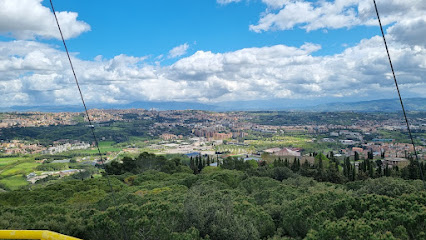
Carducci Gardens
Experience the tranquility of Carducci Gardens in Perugia, where lush landscapes and stunning city views create a serene escape for every traveler.
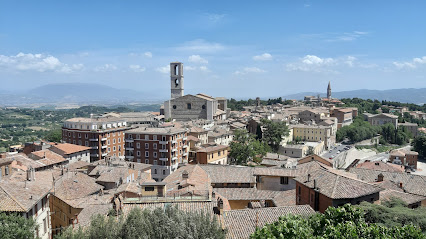
National Gallery
Discover the artistic heritage of Umbria at the National Gallery of Umbria, featuring masterpieces from the Renaissance in a stunning historical setting.

Etruscan Arch
Explore the Etruscan Arch in Perugia, a stunning historical landmark showcasing ancient architecture and rich cultural heritage.
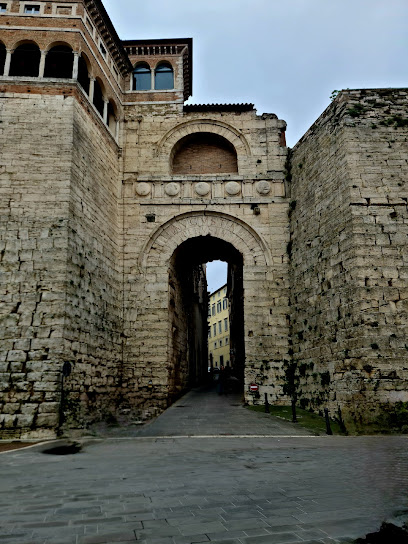
Perugia Cathedral
Discover the architectural wonder of Perugia Cathedral, a true masterpiece of Gothic design nestled in the vibrant heart of Perugia.
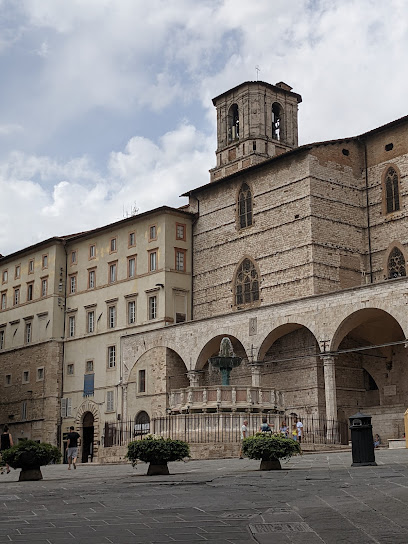
Chiesa di San Michele Arcangelo
Discover the architectural beauty and serene ambiance of Chiesa di San Michele Arcangelo, a must-visit Catholic church in the heart of Perugia.
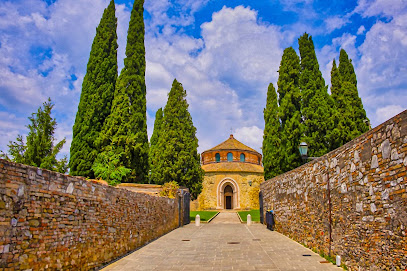
Etruscan Well
Explore the Etruscan Well in Perugia, a historical landmark showcasing ancient engineering and rich cultural heritage.
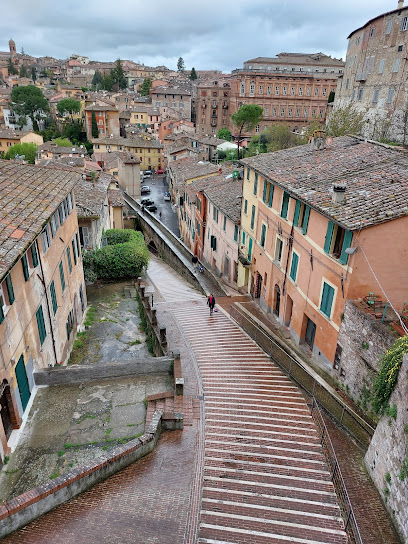
Abbazia di San Pietro
Discover the historic Abbazia di San Pietro in Perugia, a stunning blend of art, spirituality, and breathtaking architecture.
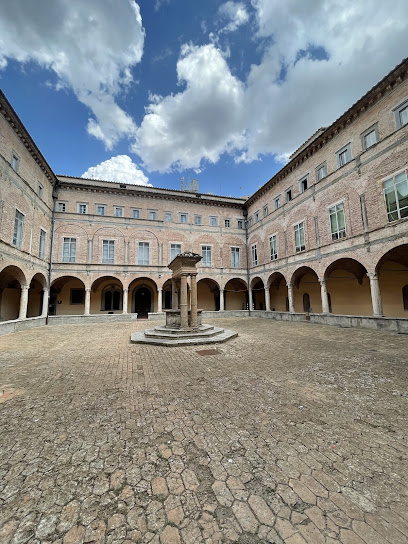
The Fontana Maggiore
Explore the enchanting Fontana Maggiore in Perugia, Italy's captivating historical landmark with intricate sculptures and vibrant surroundings.

National Archaeological Museum of Umbria
Explore the rich history of Umbria at the National Archaeological Museum, home to extraordinary artifacts from ancient Etruscan and Roman civilizations.
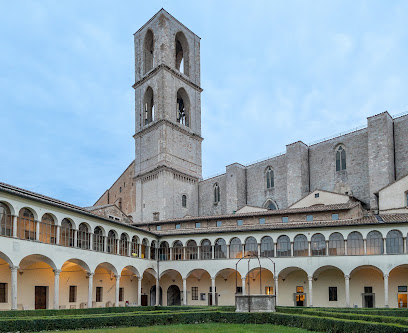
Hall of Notaries
Explore the Hall of Notaries in Perugia, a stunning historical site that showcases the city's rich medieval heritage and architectural beauty.
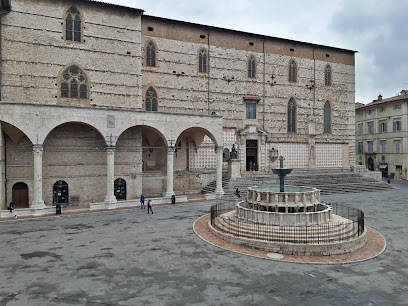
Perugia Sotterranea Accesso
Discover the hidden treasures of Perugia Sotterranea, an archaeological marvel that unveils the ancient history beneath the vibrant streets of Perugia.
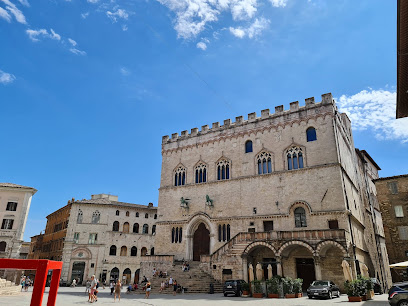
Porta Sole
Experience breathtaking views of Perugia from Porta Sole, the ultimate observation deck that combines natural beauty with rich cultural history.
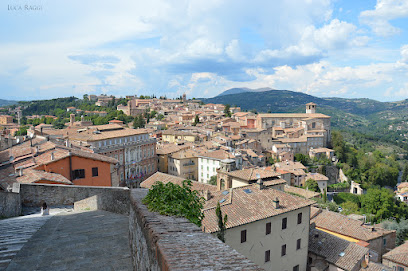
Unmissable attractions to see
Papal Basilica and Sacred Convent of Saint Francis in Assisi
Discover the spiritual and artistic treasures of the Papal Basilica and Sacred Convent of Saint Francis, a UNESCO World Heritage site in Assisi, Italy.
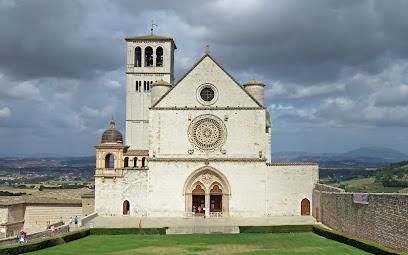
Basilica di Santa Maria degli Angeli
Discover the serene beauty and spiritual significance of the Basilica di Santa Maria degli Angeli, a must-visit destination in Italy's Umbria region.
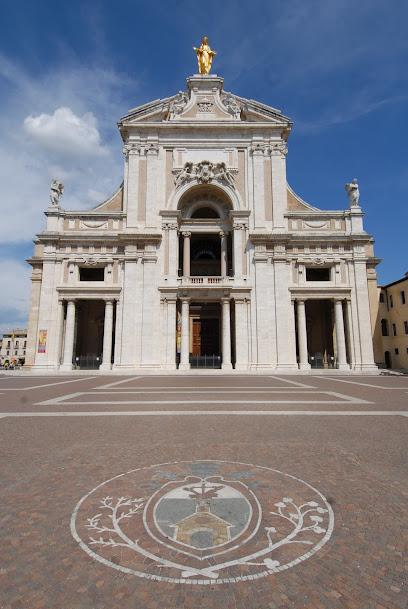
Duomo di Orvieto
Discover the breathtaking beauty of Duomo di Orvieto, a Gothic cathedral showcasing stunning art and architecture in the heart of Italy.
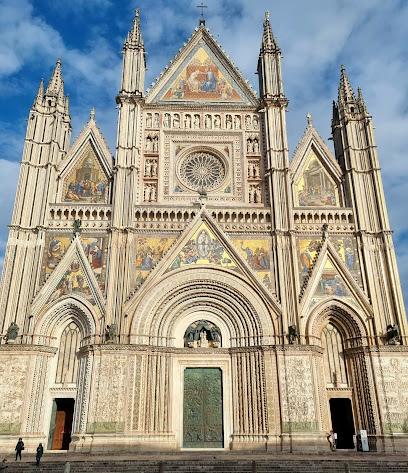
Pozzo di San Patrizio
Explore the fascinating Pozzo di San Patrizio, a historical marvel in Orvieto with an enchanting double helix staircase and deep historical roots.
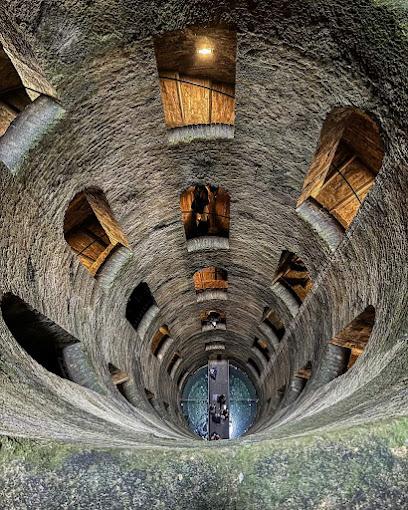
Piazza IV Novembre
Discover the enchanting Piazza IV Novembre in Perugia, a historical landmark rich in medieval architecture and vibrant local culture.
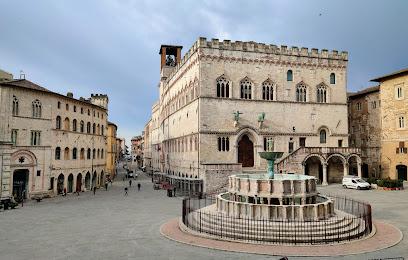
Basilica di Santa Chiara
Explore the Basilica di Santa Chiara, a Gothic masterpiece in Assisi, Italy, home to stunning frescoes and the tomb of St. Clare, a spiritual retreat for all.
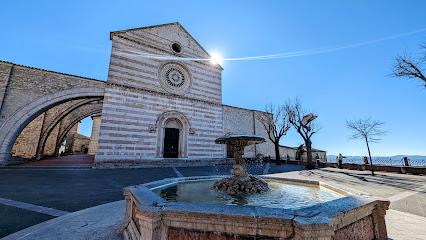
Rocca Paolina
Discover the breathtaking Rocca Paolina in Perugia, a majestic historical landmark blending rich history, stunning architecture, and vibrant cultural experiences.
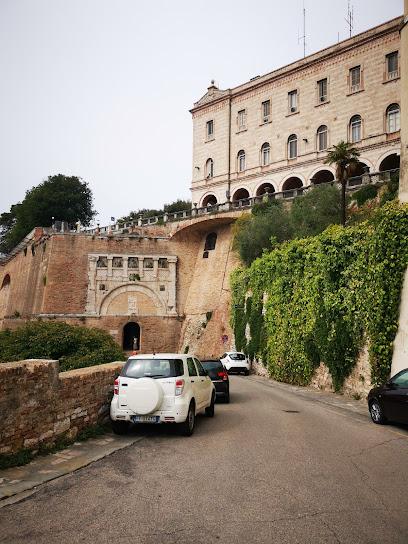
Fonti del Clitunno
Experience the enchanting beauty of Fonti del Clitunno, a picturesque park with stunning springs and serene landscapes in Italy's Umbria region.
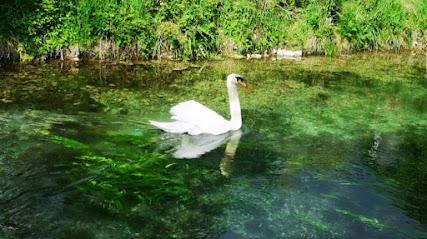
San Damiano
Discover the serene beauty and spiritual depth of San Damiano, a historical sanctuary in Assisi, Italy, closely tied to St. Francis.
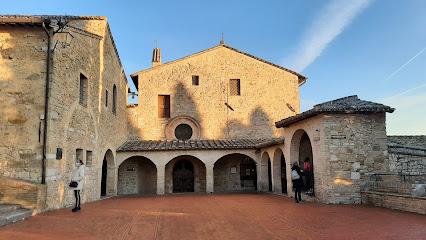
Eremo delle Carceri
Discover the spiritual haven of Eremo delle Carceri, a serene shrine in Assisi surrounded by nature, rich in history and tranquility.
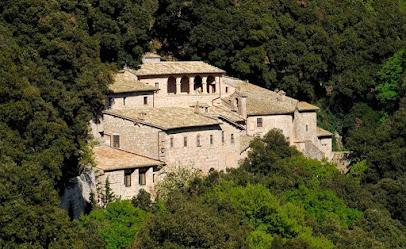
Cathedral of San Rufino
Discover the breathtaking Cathedral of San Rufino in Assisi, a masterpiece of Romanesque architecture and a cornerstone of the town's rich spiritual heritage.
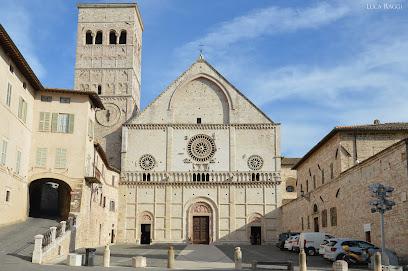
Basilica of Sant'Ubaldo, Gubbio
Explore the Basilica of Sant'Ubaldo in Gubbio, a stunning Romanesque gem offering breathtaking views, rich history, and spiritual tranquility.

Rocca Maggiore
Discover the historical grandeur and breathtaking views of Rocca Maggiore, a medieval fortress in Assisi that captivates every traveler.
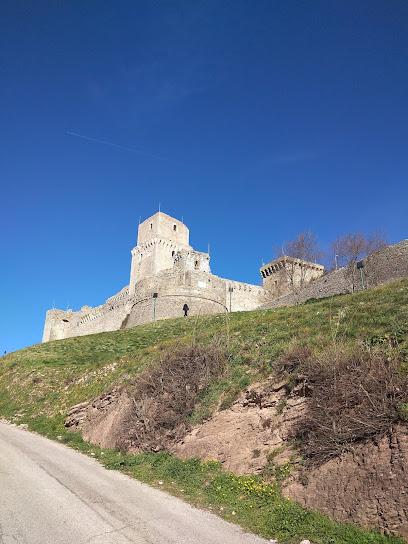
Piazza del Comune
Discover the enchanting Piazza del Comune in Assisi, where history, culture, and stunning architecture converge in Italy's beautiful Umbria region.
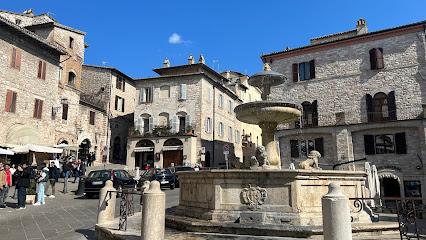
Mount Subasio
Discover the breathtaking beauty of Mount Subasio, a natural park near Assisi, offering stunning views, rich wildlife, and serene hiking trails for every adventurer.
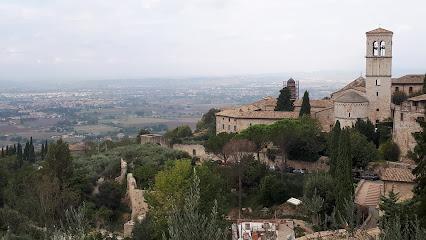
Essential places to dine
Al Mangiar Bene
Experience authentic Italian cuisine at Al Mangiar Bene in Perugia - where tradition meets flavor in every dish.
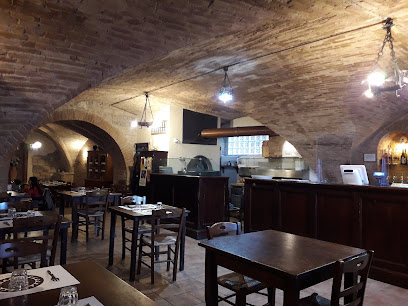
Osteria a Priori
Experience authentic Italian cuisine at Osteria a Priori in Perugia - where every dish tells a story.
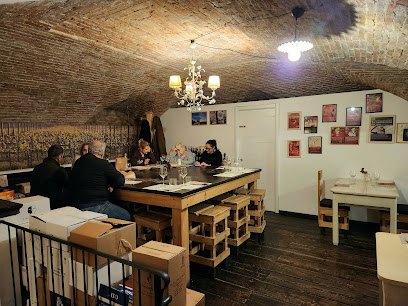
Ristorante del Sole
Discover authentic Italian cuisine at Ristorante del Sole in Perugia – where tradition meets modernity through exquisite small plates.
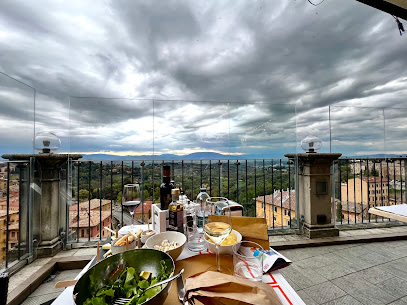
Locanda Del Bartoccio
Experience authentic Italian cuisine at Locanda Del Bartoccio in Perugia - where tradition meets flavor in every dish.
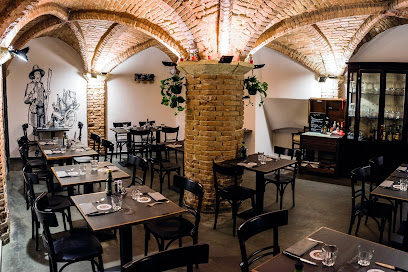
Dal Mi' Cocco
Experience authentic Italian cuisine at Dal Mi' Cocco in Perugia—where tradition meets taste in a cozy atmosphere.
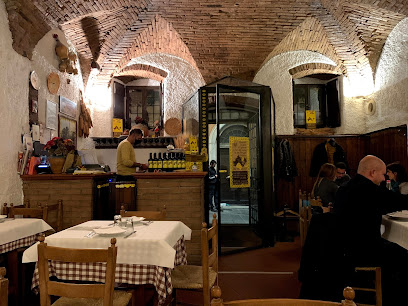
La Taverna
Discover authentic Italian cuisine at La Taverna in Perugia – where every dish reflects Italy's rich culinary heritage.
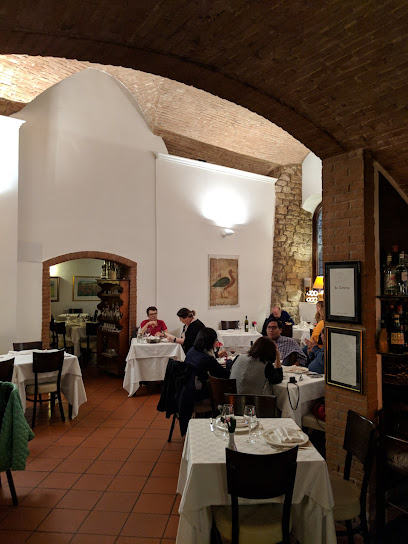
Ristorante Al Tartufo
Experience exquisite Italian cuisine at Ristorante Al Tartufo in Perugia – where flavor meets family-friendly hospitality.
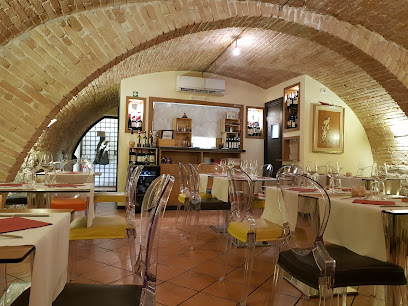
Ristorante IL CANTINONE Perugia Centro
Experience the essence of Italy at Ristorante IL CANTINONE in Perugia - where authentic flavors meet warm hospitality.
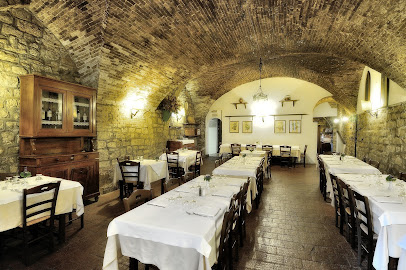
Storie Perugine
Experience authentic Italian cuisine at Storie Perugine in Perugia - where tradition meets flavor in every dish.
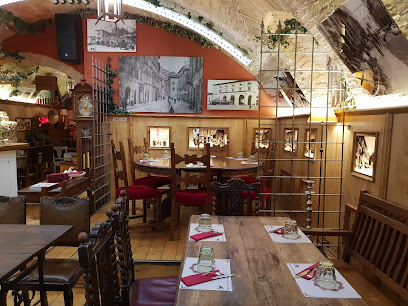
La Bottega di Perugia
Experience authentic Italian flavors at La Bottega di Perugia, where delicious sandwiches meet exceptional quality at affordable prices.
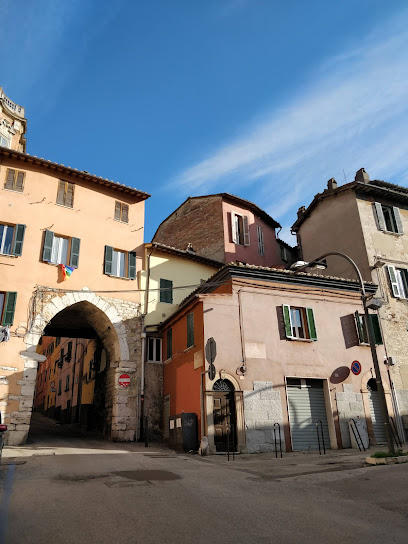
La Prosciutteria Perugia
Discover authentic Umbrian flavors at La Prosciutteria Perugia – your destination for exquisite cheeses, cold cuts, and fine wines.
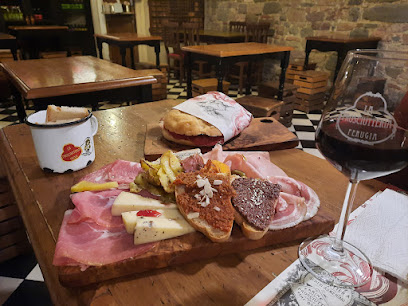
L'Officina
Experience the essence of Italian fine dining at L'Officina in Perugia – where culinary artistry meets local tradition.
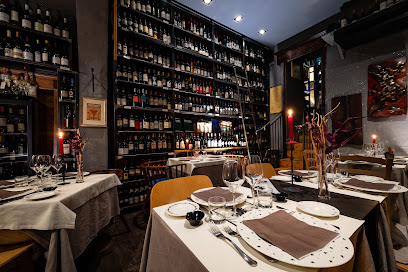
Locanda del Morlacchi
Experience authentic Italian and seafood cuisine at Locanda del Morlacchi in Perugia—where tradition meets taste.
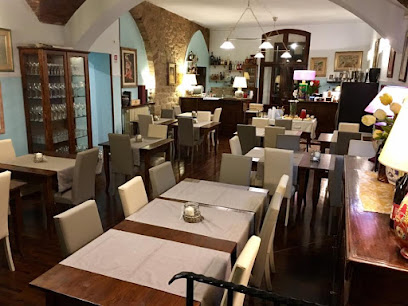
Ristorante Settimo Sigillo
Experience authentic Italian flavors at Ristorante Settimo Sigillo in Perugia - where every dish tells a story of tradition and passion.
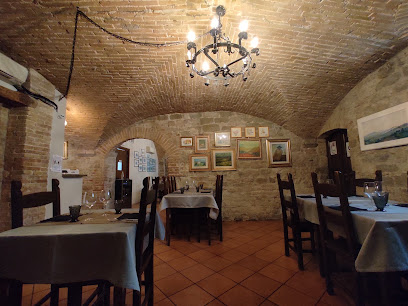
Ristorante Dalla Bianca
Experience authentic Italian cuisine at Ristorante Dalla Bianca in Perugia - where every meal is a celebration of local flavors.

Markets, malls and hidden boutiques
Flying Tiger Copenhagen
Explore the whimsical world of Flying Tiger Copenhagen in Perugia – your go-to spot for unique gifts, home decor, and playful treasures.
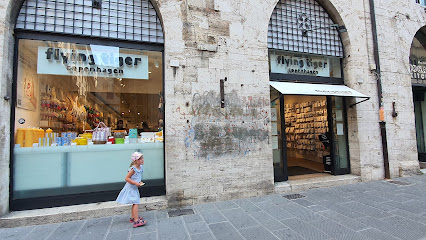
Chocostore by Eurochocolate
Discover the exquisite world of handcrafted chocolates at Chocostore by Eurochocolate in the heart of Perugia, Italy.
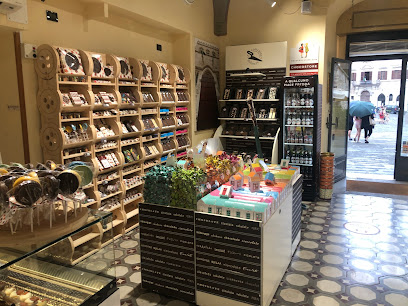
152 store by Ticchioni
Explore the chic 152 Store by Ticchioni in Perugia, where stylish clothing and delicious coffee blend in a vibrant shopping experience.
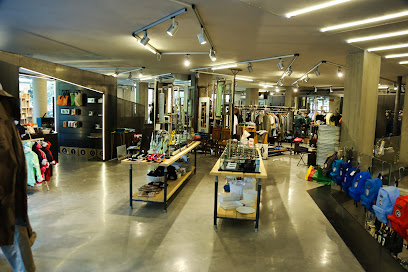
#TeaPerugia - La Pianta del Tè Tea & Coffee House
Discover the tranquil charm of La Pianta del Tè, Perugia's premier destination for exquisite tea, coffee, and delightful sweets.
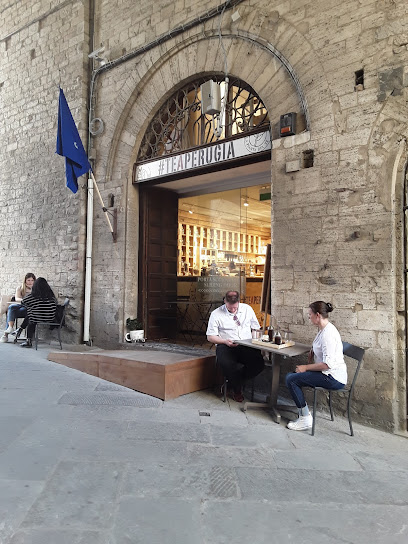
Smooth Centro Storico
Discover a wide range of stylish apparel for all ages at Smooth Centro Storico in Perugia, where quality meets variety in the heart of Italy.
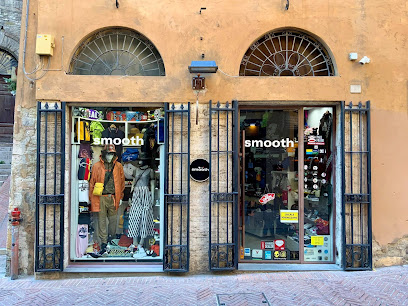
Niba 1976
Explore the stylish offerings at Niba 1976, a boutique in Perugia that showcases unique Italian fashion and accessories for discerning travelers.
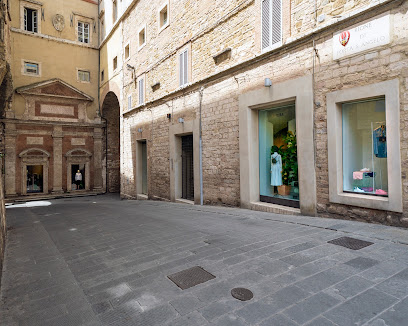
Subdued
Explore the stylish world of Subdued in Perugia, offering trendy women's and youth clothing that blends contemporary flair with Italian charm.
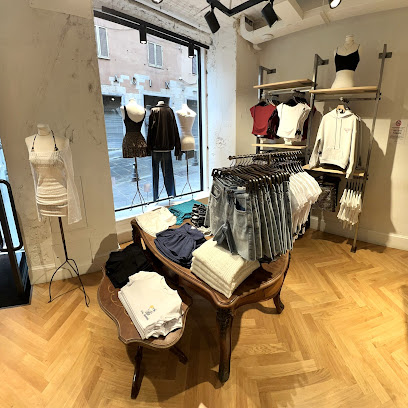
Smooth Kicks
Discover the ultimate youth fashion experience at Smooth Kicks in Perugia, where style meets local flair in a vibrant shopping atmosphere.
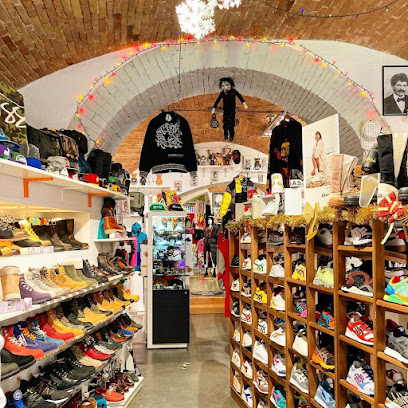
Paris Ricci
Discover the exquisite fashion of Paris Ricci in Perugia, where contemporary style meets Italian elegance in a charming boutique setting.
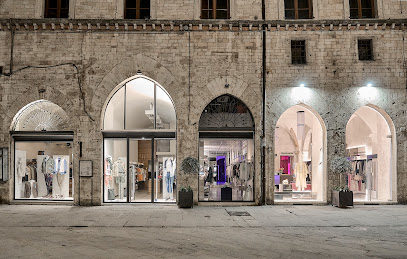
Altromercato Perugia Bottega
Explore Altromercato Perugia Bottega, a unique gift shop offering organic products, handcrafted crafts, and beauty supplies in the heart of Perugia.
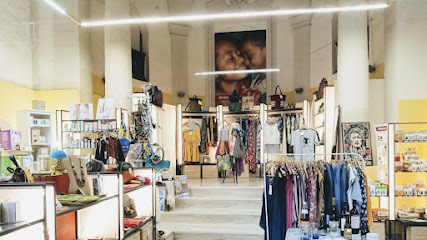
Antica Spezieria e Drogheria Bavicchi
Explore the rich flavors and aromas of spices at Antica Spezieria e Drogheria Bavicchi, a historic spice store in the heart of Perugia.
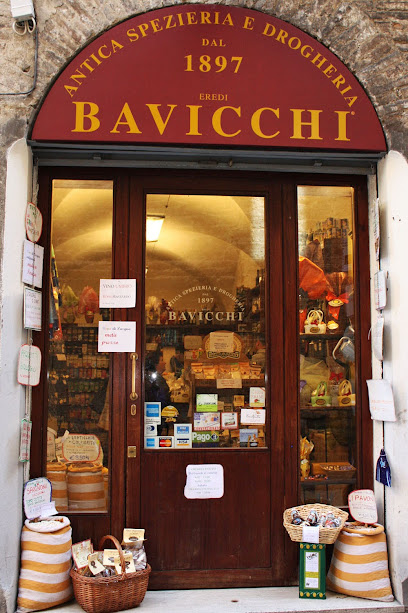
PANDA
Explore PANDA in Perugia for unique gifts, fashion accessories, and exquisite stationery that capture the essence of Italian craftsmanship.
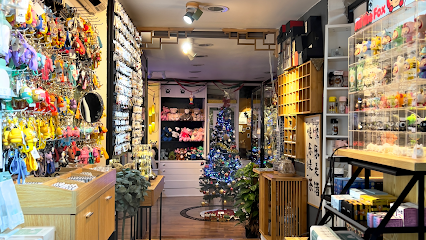
Swarovski Boutique Perugia Centro
Explore the exquisite Swarovski Boutique in Perugia for stunning jewelry and unique collectibles in a historic setting.

Lemmi Perugia
Discover the elegance of Italian fashion at Lemmi Perugia, a boutique offering women's and men's clothing, costume jewelry, and custom tailoring.
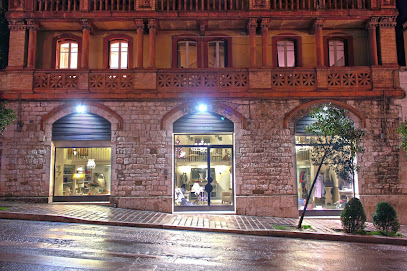
Buonumori Boutique
Discover unique fashion at Buonumori Boutique in Perugia—where local craftsmanship meets contemporary style for a memorable shopping experience.
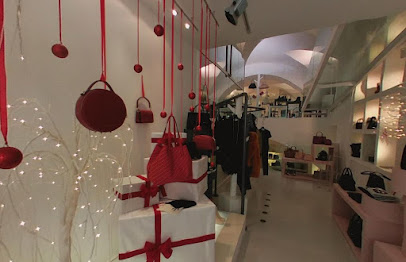
Essential bars & hidden hideouts
Elfo Pub
Discover Elfo Pub in Perugia – a lively spot with a vast selection of beers, perfect for relaxing and soaking in the local nightlife.
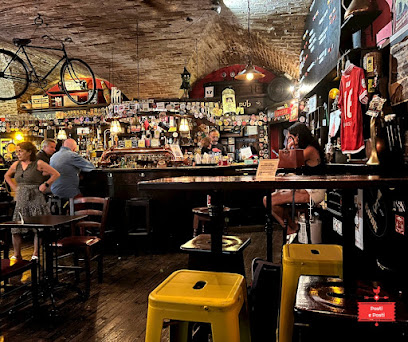
Quei Bravi Ragazzi
Experience the vibrant nightlife at Quei Bravi Ragazzi, a beloved pub in Perugia known for its lively atmosphere and extensive drink selection.
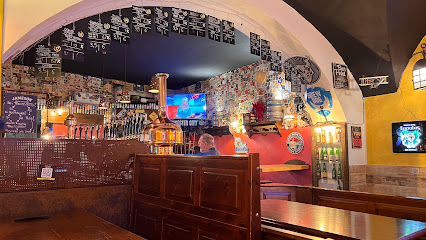
Bar Tender Lounge Cafè
Discover the authentic Italian bar experience at Bar Tender Lounge Cafè in Perugia, where every sip comes with a view and a story.
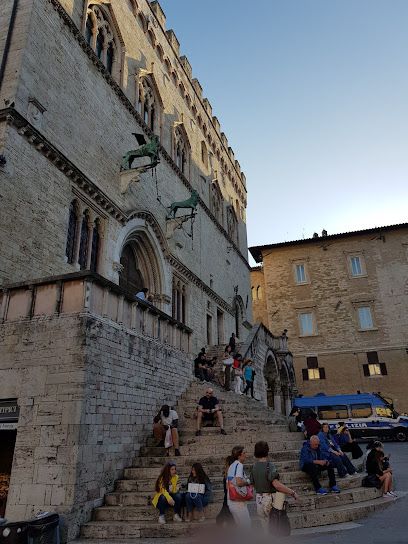
Punto di Vista
Discover the vibrant atmosphere and exquisite cocktails at Punto di Vista, the perfect spot for nightlife in Perugia, Italy.
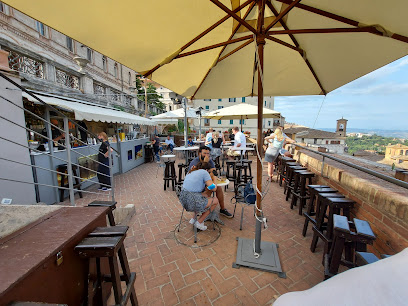
Vinoteca Perugia
Experience the finest wines at Vinoteca Perugia, where tradition meets passion in every glass.
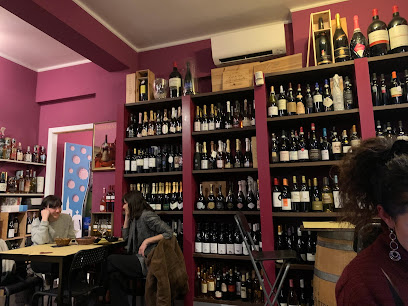
Galera - Cocktail Room
Discover Galera - Cocktail Room in Perugia: the perfect blend of exquisite cocktails and vibrant nightlife in a chic atmosphere.
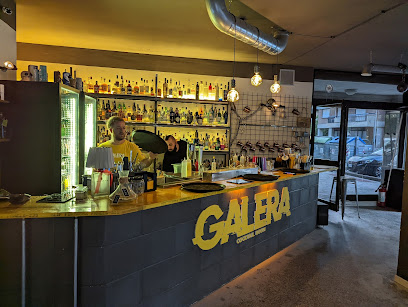
Tommi Bar
Discover the charm of Tommi Bar in Perugia, an inviting space for delightful drinks and local culture.
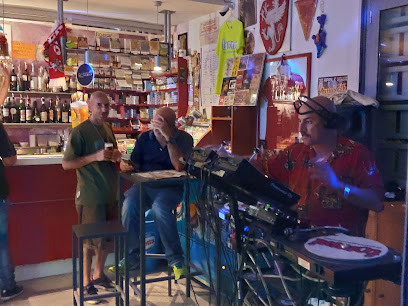
Snack Bar
Experience the vibrant atmosphere of Snack Bar in Perugia, where delicious cocktails, fresh espresso, and tasty sandwiches await you.
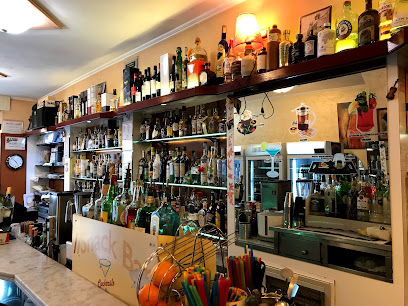
Bar Modugno
Discover the delightful flavors of Bar Modugno in Perugia, where cozy ambiance meets exquisite gelato and refreshing beverages.
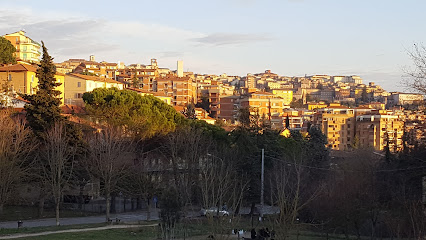
Dempsey's Perugia
Experience the best cocktails in Perugia at Dempsey's, where local flavors meet a vibrant nightlife ambiance.
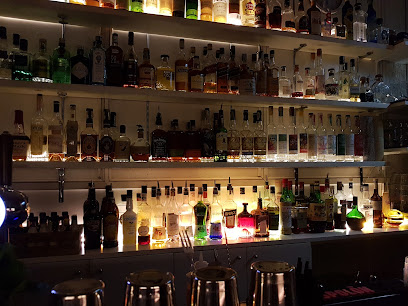
C'era Una Vodka
Experience the vibrant atmosphere of C'era Una Vodka, a top pub in Perugia known for its extensive vodka selection and delicious snacks.
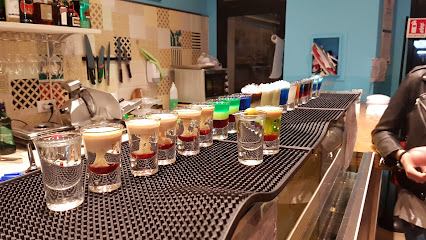
Il Birrino
Discover the vibrant atmosphere of Il Birrino, a cozy bar in Perugia, perfect for unwinding with drinks and local charm.
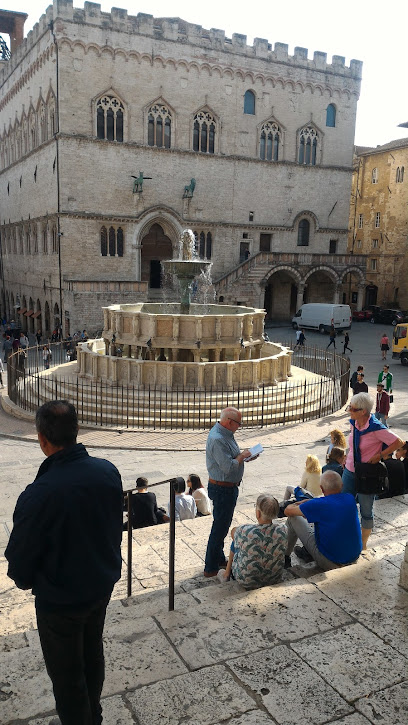
John Maverick Cafe
Experience the vibrant nightlife of Perugia at John Maverick Cafe, where cocktails and culture blend seamlessly into an unforgettable evening.
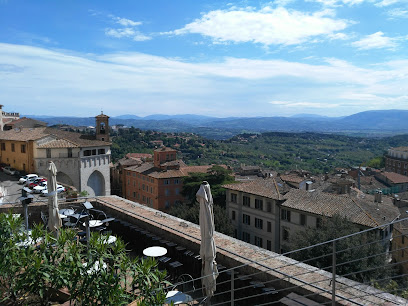
Minimal Bar
Discover the lively Minimal Bar in Perugia, a perfect blend of great drinks and a welcoming atmosphere for tourists and locals alike.
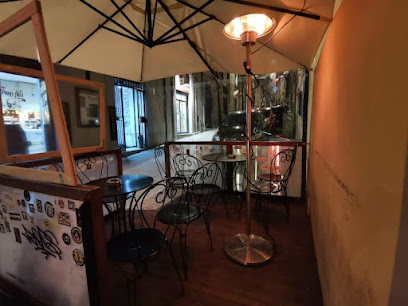
Marla
Discover Marla Cocktail Bar in Perugia: a vibrant hub for exquisite cocktails and electrifying DJ nights, perfect for an unforgettable nightlife experience.
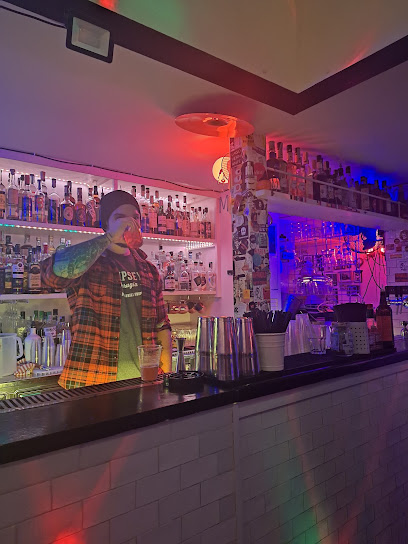
Travel experiences inspired by this city
Explore more travel diariesLocal Phrases
-
- HelloCiao
[chow] - GoodbyeArrivederci
[ar-ree-ve-der-chee] - YesSì
[see] - NoNo
[no] - Please/You're welcomePer favore/Prego
[per fa-voh-reh/preh-go] - Thank youGrazie
[gra-tzee-eh] - Excuse me/SorryScusi/Mi dispiace
[skoo-zee/mee dee-spya-che] - How are you?Come stai?
[koh-meh stai] - Fine. And you?Bene. E tu?
[beh-neh. eh too] - Do you speak English?Parli inglese?
[par-lee een-gleh-zeh] - I don't understandNon capisco
[non ka-pee-sko]
- HelloCiao
-
- I'd like to see the menu, pleaseVorrei vedere il menu, per favore
[vor-ray veh-deh-reh eel meh-noo, per fa-voh-reh] - I don't eat meatNon mangio carne
[non man-joh kahr-neh] - Cheers!Salute!
[sah-loo-teh] - I would like to pay, pleaseVorrei pagare, per favore
[vor-ray pah-gah-reh, per fa-voh-reh]
- I'd like to see the menu, pleaseVorrei vedere il menu, per favore
-
- Help!Aiuto!
[ai-oo-toh] - Go away!Vai via!
[vai vee-ah] - Call the Police!Chiama la polizia!
[kee-ah-mah lah poh-lee-tsya] - Call a doctor!Chiama un dottore!
[kee-ah-mah oon doh-toh-reh] - I'm lostMi sono perso
[mee soh-no pehr-soh] - I'm illSto male
[stoh mah-leh]
- Help!Aiuto!
-
- I'd like to buy...Vorrei comprare...
[vor-ray kohm-prah-reh] - I'm just lookingSto solo guardando
[stoh soh-loh gwar-dan-doh] - How much is it?Quanto costa?
[kwahn-toh koh-stah] - That's too expensiveÈ troppo caro
[eh troh-poh kah-roh] - Can you lower the price?Puoi abbassare il prezzo?
[pwoy ab-bah-sah-reh eel preh-tsoh]
- I'd like to buy...Vorrei comprare...
-
- What time is it?Che ora è?
[keh oh-rah eh] - It's one o'clockÈ l'una
[eh loo-nah] - Half past (10)Sono le dieci e mezza
[soh-no leh dee-eh-chee eh meh-tzah] - MorningMattina
[maht-tee-nah] - AfternoonPomeriggio
[poh-meh-ree-joh] - EveningSera
[seh-rah] - YesterdayIeri
[yeh-ree] - TodayOggi
[oh-jee] - TomorrowDomani
[doh-mah-nee] - 1Uno
[oo-no] - 2Due
[dweh] - 3Tre
[treh] - 4Quattro
[kwah-troh] - 5Cinque
[cheen-kweh] - 6Sei
[say] - 7Sette
[seht-teh] - 8Otto
[oh-ttoh] - 9Nove
[noh-veh] - 10Dieci
[dee-eh-chee]
- What time is it?Che ora è?
-
- Where's a/the...?Dov'è...?
[doh-veh] - What's the address?Qual è l'indirizzo?
[kwal eh leen-dee-ree-tsoh] - Can you show me (on the map)?Puoi mostrarmi (sulla mappa)?
[pwoy mohs-trar-mee soo-lah mahp-pah] - When's the next (bus)?Quando passa il prossimo (autobus)?
[kwahn-doh pahs-sah eel prohs-ssee-moh ow-toh-boos] - A ticket (to ....)Un biglietto (per ....)
[oon beel-yet-toh, per]
- Where's a/the...?Dov'è...?
History of Perugia
-
Perugia's origins date back to the Etruscan civilization, which flourished in the region around the 8th century BCE. The city was one of the twelve confederated cities of the Etruscan League. Remnants of this period include the Etruscan Arch and the well-preserved Etruscan Well, which provide a glimpse into the advanced engineering and urban planning of this ancient civilization.
-
In 310 BCE, the Romans began their conquest of the Etruscan cities, and Perugia was no exception. The city was fully integrated into the Roman Empire by the 3rd century BCE. Perugia played a significant role during the Roman era, serving as a strategic military outpost. The Roman influence is still visible today in the city's layout, with remnants of Roman walls and gates.
-
During the Middle Ages, Perugia became a significant center of power and culture. The city was often embroiled in conflicts between the Papal States and the Holy Roman Empire. In the 14th century, Perugia was under the rule of the powerful Baglioni family, who were known for their ruthless and ambitious nature. The construction of the Rocca Paolina fortress in the 16th century by Pope Paul III marked the end of the Baglioni dominance and the city's submission to papal control.
-
Perugia experienced a cultural and artistic flourishing during the Renaissance. The city became a hub for artists, including Pietro Vannucci, known as Perugino, who was the teacher of Raphael. The Galleria Nazionale dell'Umbria houses an impressive collection of Renaissance art, reflecting the city's significant contribution to this pivotal period in art history.
-
In the 19th century, Perugia played a crucial role in the unification of Italy. The city was a site of major uprisings against papal rule, culminating in the Perugia Uprising of 1859, which was brutally suppressed by papal forces. However, this resistance contributed to the larger movement for Italian unification, and in 1860, Perugia was annexed to the Kingdom of Italy. Today, Perugia is a vibrant university city, known for its rich history, cultural festivals, and culinary delights.
Perugia Essentials
-
Perugia is located in the Umbria region of central Italy. The nearest major international airport is Leonardo da Vinci-Fiumicino Airport (FCO) in Rome, approximately 180 kilometers away. From Rome, you can take a train to Perugia, which typically takes around 2 to 3 hours. Alternatively, Perugia has its own small airport, San Francesco d'Assisi Airport (PEG), which handles domestic flights and some international routes. Buses and taxis are also available for connections from nearby cities.
-
Perugia has a well-developed public transportation system, including buses and a mini-metro. The mini-metro connects the main train station to the city center and other key locations. Taxis are also readily available and can be hailed on the street or booked in advance. For those who prefer to explore on their own, car rentals are available, but be mindful of the narrow and winding streets in the historic center.
-
The official currency in Italy is the Euro (EUR). Credit cards are widely accepted in hotels, restaurants, and larger shops. However, it's advisable to carry some cash for smaller establishments, markets, and rural areas. ATMs are plentiful in Perugia, and most accept international cards.
-
Perugia is generally a safe city for tourists. However, like any other destination, it's important to take standard precautions. Be cautious of pickpockets, especially in crowded areas and on public transport. Some areas near the train station have higher crime rates targeting tourists, so it's best to stay vigilant and avoid walking alone at night.
-
In case of emergency, dial 112 for immediate assistance. This number connects you to police, medical, and fire services. The local hospital, Santa Maria della Misericordia, is well-equipped to handle medical emergencies. Pharmacies are also available throughout the city for minor health issues. It is advisable to have travel insurance that covers medical emergencies.
-
Fashion: Do dress stylishly but modestly, especially when visiting religious sites. Avoid overly casual attire such as beachwear in the city center. Religion: Do respect local customs and traditions. Always cover your shoulders and knees when entering churches. Public Transport: Do validate your ticket before boarding. Don't eat or drink on public transport. Greetings: Do greet people with a handshake. A 'Ciao' or 'Buongiorno' is customary. Eating & Drinking: Do try local dishes and wines. Don't rush through meals; dining is a leisurely activity in Italy.
-
To experience Perugia like a local, visit the weekly markets where you can buy fresh produce, local cheeses, and other regional specialties. Engage with locals, who are often friendly and willing to share tips about the city. Don’t miss the chance to explore the underground city, a network of medieval streets and buildings beneath the modern city. For a unique experience, attend the Umbria Jazz Festival in July or the Eurochocolate Festival in October.
Trending Landmark in Perugia
-
Piazza IV Novembre
-
Rocca Paolina
-
Città della Domenica
-
Carducci Gardens
-
National Gallery
-
Etruscan Arch
-
Perugia Cathedral
-
Chiesa di San Michele Arcangelo
-
Etruscan Well
-
Abbazia di San Pietro
-
The Fontana Maggiore
-
National Archaeological Museum of Umbria
-
Hall of Notaries
-
Perugia Sotterranea Accesso
-
Porta Sole
Nearby Cities to Perugia
-
Things To Do in Assisi
-
Things To Do in Montepulciano
-
Things To Do in Orvieto
-
Things To Do in Arezzo
-
Things To Do in Urbino
-
Things To Do in Montegiardino
-
Things To Do in Fiorentino
-
Things To Do in Siena
-
Things To Do in Chiesanuova
-
Things To Do in San Marino
-
Things To Do in Faetano
-
Things To Do in Acquaviva
-
Things To Do in Domagnano
-
Things To Do in Borgo Maggiore
-
Things To Do in Serravalle











